Some of you will have noticed a couple of different (quieter, cleaner, newer) buses on the 271 route in recent days. We are hoping that this is the start of the upgrading of buses running through Highgate that the Forum has been campaigning for. TfL has promised that all the buses running through Highgate – and across London – will be of the latest standard by the end of next year. This will correct what has long seemed an injustice to those of us keen to improve Highgate’s lot.
It is high time that TfL put some of its newer buses on the routes running up Highgate Hill which, alongside Muswell Hill, is the steepest bit of road on the network in north London. This is even more so given TfL has seen the air quality data the Forum has collected, showing that air pollution is comfortably above the legal limit. (We all know that buses contribute more pollution than private vehicles.) But progress has been slow.
TfL has around 9500 buses running on the network. The median age (the age of the middle one if you line them all up by age) is 5 years. Not surprisingly, given the age of the fleet: the latest bus audit published by TfL, as at March 2018, shows that just under half of the buses in the fleet meet the equivalent of Euro VI (the current expected level, introduced in 2012) standards or better.
Forum analysis of that data shows that Highgate’s buses were among the oldest on the network. Not one of the six routes (271, 210, 143, W5, 603 and 214) running to the village had buses younger than the median. Indeed, the 271s are oldest (median age 12), followed by the 214s and 603s (11 year median).
The buses on Archway Road are little better: the 263s have an 9 year median and the 43s are 11 years (though with some newer buses on the route too). The 134s are better with all buses 4 or 5 years old. (See the screenshots of data at the end of the blog.)
So, eight of Highgate’s nine routes had buses older than the median at the time of the audit. We understand that TfL has had to focus on central London routes but, given the terrain, we were shocked to learn that our buses are so old, relative to most others.
This matters not just because we want to see newer buses on our streets, have quieter buses rumbling past our schools, pubs and cafes, or be in more pleasant buses when getting about, though all that would be nice. Rather it is a desire to see TfL take seriously the concerns we have about pollution.
To grasp how poor the situation is it’s necessary to understand a bit about emissions standards. The standards have evolved from, so-called, Euro I in 1992 to the latest Euro VI in 2012. The table shows how the extent of emissions has fallen with successive standards. The new buses/vehicles are much cleaner than those from 30 years ago.
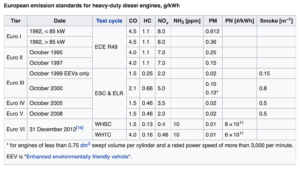
The problem is that many of Highgate’s buses are from standards that came in 20 years ago when expectations were very different. The buses that run through Highgate are not only old but also big polluters.
The buses on routes 214, 603, 271 are mostly Euro III which date from 2000. Only about 10% of London’s buses are such bad polluters and a third of Highgate’s routes have them. There’s a certain irony that Highgate’s “school bus”, the 603, is one of the dirtiest in London. The only buses with lower standards are the 10 genuine Routemasters from the 1960s running (for tourists) on the heritage route 15.
The other routes are a bit better but not much so. The fall in emissions between Euro III and Euro IV was modest compared to what’s happened by Euro VI. (The 143 and 263 are Euro IV, W5 and 210 are Euro V, 134 is EEV, and 43 is 3 or EEV.) “EEV” is an “enhanced environmentally friendly vehicle”, a term for a “standard (that) lies between the levels of Euro V and Euro VI.”
Not only has Highgate had a rough deal compared to London on average when it comes to buses but eagle-eyed owners of diesel cars will note that not one bus that runs through Highgate Village (at the time of the audit) meets the standards that GLA now requires of private vehicles in the ULEZ Congestion Charge Zone. Of course everyone is keen to get rid of polluting cars but perhaps the GLA and TfL should also be getting their own house in order a little quicker?
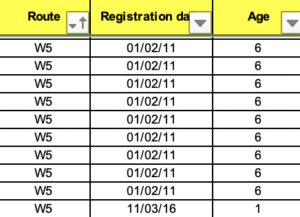



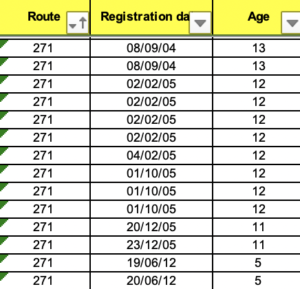
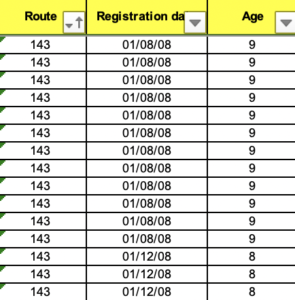
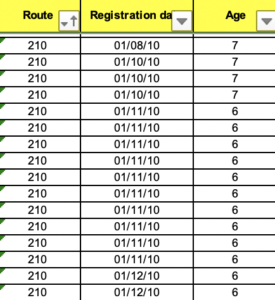
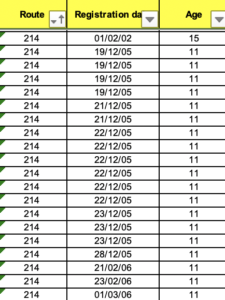


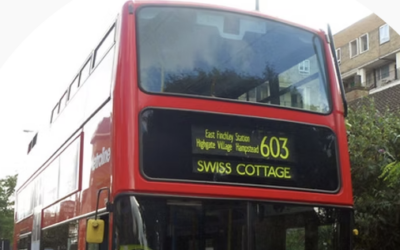

0 Comments